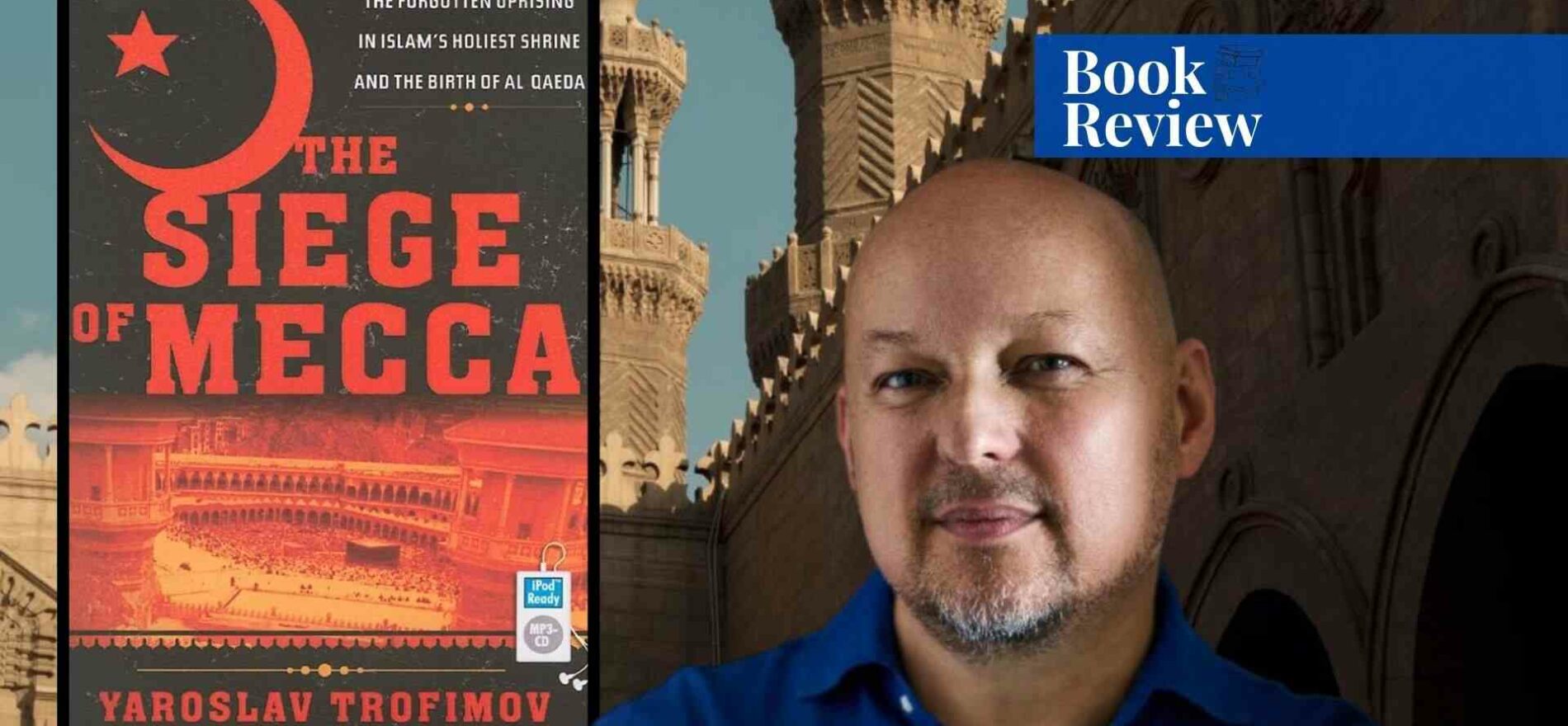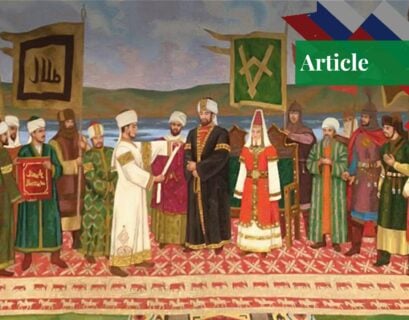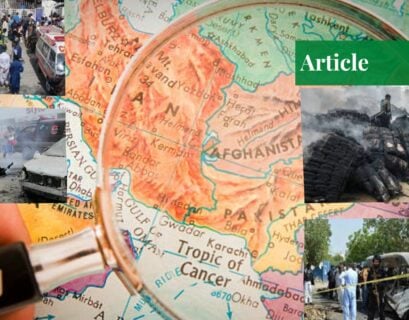Mr Khawaja Arsalan is currently pursuing his Master's degree from NUST and takes a keen interest in Geopolitics.
On 20th November 1979, Masjid Al-Haram, or the Grand Mosque of Mecca, the holiest, most sacred place for all Muslims was unimaginably attacked, not by non-Muslims but by a small faction of Muslim extremists, lost in their misinterpretation of Islamic teachings. The heinous siege of Mecca, not only brought shame to the Islamic world but also discredited Islam’s image as a religion for peace and unity.
This act of violence is one of its kind, hidden in the chapters of history, never discussed or even highlighted. In 2007, Ukrainian writer Yaroslav Trofimov offered an in-depth look at this attack in his book, “The Siege of Mecca: The Forgotten Uprising in Islam’s Holiest Shrine and the Birth of Al-Qaeda.” He takes the reader across the journey of how some scholars distorted a peaceful religion like Islam and further describes it as becoming the root cause of global terrorism in the 21st century.
The Siege of Mecca broadly focuses on the events starting from the takeover of Najd and Hijaz (modern-day Saudi Arabia) in the early 1900s by Al Saud from the Ottomans with British help. Then, it uncovers the cruelties done to establish a monarchy over the complete region under the disguise of creating a country based on true Islamic principles and values. The latter was carried out with local alliances, including the Ikhwan tribe.
In March 1929, the alliances shifted as the Battle of Sabilla occurred between the Ikhwan & Al-Saud. The cause of the battle is said to be a betrayal by the Al-Saud. Instead of implementing true Islamic values and principles, the leading clan deviated to create a more modern state, resulting in a revolt by the Ikhwans. Al Saud managed to squash the rebellion, and things simmered down after a while, but an underlying air of vengeance remained.
Almost 26 years later, a man from the Ikhwan emerged, Juhayman-al-Otaybi, the main culprit, planner, and executioner of this atrocious takeover. Many of his relatives were massacred by the Al Sauds in the Sabilla conquest. Still, Juhayman joined the Saudi National Guard in 1955 and served till 1973. After his service, he moved to Medina, taking a keen interest in Islamic studies under famous scholar Sheikh Bin Baz.
Due to his previous bitter experiences, however, Juhayman bordered on religious extremism. He published different pamphlets to propagate his narrative, gathering sufficient like-minded followers. They aimed to implement the true values of Islam one way or the other and that’s when they turned to the weapon of violence.
A key point is that a man named Mohammed Abdullah al-Qahtani emerged from these followers, whom Juhayman and his loyalists believed to be the Imam Mehdi (an Islamic figure prophesied to arrive a few years before the Judgement Day). On the morning of 20th November 1979, after Fajr prayers, Juhayman and his 200 followers effortlessly broke into the Grand Mosque with the element of surprise and meticulous planning on their side. They used the sound system to announce the arrival of the supposed Imam Mahdi Abdullah al-Qahtani.
Most of the worshippers were allowed to leave, and the rest were kept as hostages. A significant portion also fell for Abdullah al-Qahtani being Imam Mahdi, so they willingly decided to participate in the siege. The main agenda was to overthrow the House of Saud and bring in a government that would implement Islam in true letter and spirit. Within a few hours, the Grand Mosque of Mecca was under the complete control of these religious extremists.
Snipers occupied minarets; all gates were sealed and covered by fire. Snipers took out anyone who tried to enter or was seen near the Mosque. Numerous urgent attempts by the Interior Ministry officers to take over the mosque met with heavy resistance. Saudi forces failed to respond to this unbelievable situation. It was later revealed that underground rooms in the Mosque were used to dump automatic weapons and ammunition weeks before the siege.
The book further reveals that Saudi forces were reluctant to operate in the Grand Mosque as bloodshed inside the holy site is forbidden in Islam. Later, the government approached Ulema (Islamic scholars) to issue a fatwa (religious approval) on this issue. Ibn Baz (Juhayman’s teacher in Medina), a well-known religious cleric and a high-ranking Saudi official, along with his team, issued a fatwa that enabled Saudi forces to operate against terrorists. Frontal assaults were launched against three main gates of the Mosque; all were repulsed, causing heavy causalities to the troops.
Despite the Saudi government’s failed attempts to keep it off the grid, the news about the siege of Mecca spread like wildfire around the globe. Many in the Islamic world believed that the US and European countries would be behind this heinous crime. Riots against the US broke out in many countries, including Iran, Turkey, Pakistan, India, Bangladesh, etcetera.
Trofimov reports that the siege of Mecca continued for two weeks, and Saudi officials considered different options to counter insurgents. It included special forces operations by foreign countries, owing to the unavailability of trained troops within the Saudi National Guard. As per sources quoted by the author, GIGN, French special forces were called to train and operate on Saudi soil amidst the situation. This raised a new issue: as per Islamic law, infidels cannot enter the premises of Mecca.
Officially, the Saudi government confirmed that no non-Muslims were allowed to operate on the holy premises, but according to the author, French Commandos participated in this operation. Moreover, as per other accounts, these commandos accepted Isam before this operation.
On 1st December, a full-scale operation was launched, and CS Gas was pumped through holes drilled into the basement. Saudi forces used APCs (Armored Personnel Carriers) to make an entry. Attack helicopters provided fire support and surveillance. On 4th December 1979, finally, after a fierce clash, the Grand Mosque was cleared of all terrorists and resistance.
According to one account, 117 militants were killed by Saudi forces during the operation, including self-claimed Mahdi-Mohammed Abdullah al-Qahtani. However, Juhayman and his 68 followers were captured alive and beheaded later. After the operation, a crackdown was launched against the remnants and supporters of such religious groups. King Khalid bin Abdulaziz implemented Islamic law nationwide to resolve the issue.
Trofimov aptly describes an in-depth historical context of the socio-political and religious landscape of Saudi Arabia. This context is crucial for understanding the motivations and grievances of the insurgents. Many experts and analysts consider this event as a direct precursor to the rise of al-Qaeda and other jihadist movements. Moreover, the author conducted extensive research, drawing from various sources, including interviews with individuals directly or indirectly involved in the events. The depth of research adds credibility to the narrative.
This book provides a unique perspective of how a peaceful religion like Islam can be interpreted as extremist and cruel, going against fundamental Islamic law. Juhayaman and company, being Muslims, murdered and injured countless Muslim brothers and sisters in peruse of implementing true Islamic principles, forgetting the basic ones. This same perspective can be applied to ongoing religious extremism around the globe.
Overall, the book has received positive reviews for its thorough research and compelling storytelling. It sheds light on a pivotal yet hushed-up moment in the history of Islam and the Middle East, highlighting the complexities of religious and political dynamics. Readers interested in the history of the Middle East, the evolution of jihadist movements, or the broader context of Islamic extremism may find this book insightful and informative.
If you want to submit your articles, research papers, and book reviews, please check the Submissions page.
The views and opinions expressed in this article/paper are the author’s own and do not necessarily reflect the editorial position of Paradigm Shift.


















